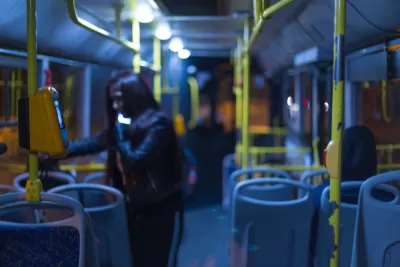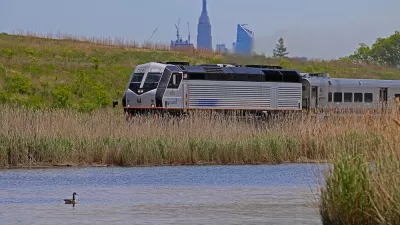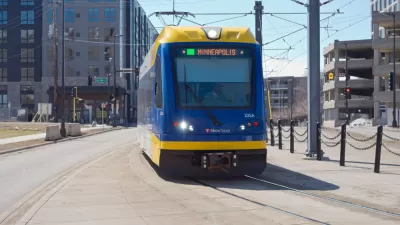Even as gas prices rise, ridership on many public transit systems continues to remain well below pre-pandemic levels.

In a piece for Marketplace, Savannah Maher describes the slow return of public transit ridership, which remains sluggish despite high gas prices, which some agencies hoped “would nudge some of us onto city buses and trains and help transit ridership recover from the nosedive it took during the pandemic.”
With remote work still hugely popular, transit systems in tech hubs like San Francisco are still seeing low ridership numbers. In the case of Bay Area Rapid Transit (BART), ridership sits at 30 to 35 percent of pre-pandemic levels, when the system carried roughly 400,000 people across the Bay Area every weekday.
Some agencies have reduced or eliminated fares to lure riders back, but the future of fare-free transit programs hinges on uncertain funding sources. But while free fares or service changes may help bring riders back, the prevalence of remote work means that some changes in commuting patterns are likely here to stay, upending long-established models of service geared towards 9-to-5 commutes. Systems in cities with high numbers of remote workers will likely have to make some transformative changes to serve the needs of remaining riders and establish new funding models that rely less heavily on farebox revenue to fund operations.
FULL STORY: Public transit ridership is slow to return, despite high gas prices

Planetizen Federal Action Tracker
A weekly monitor of how Trump’s orders and actions are impacting planners and planning in America.

San Francisco's School District Spent $105M To Build Affordable Housing for Teachers — And That's Just the Beginning
SFUSD joins a growing list of school districts using their land holdings to address housing affordability challenges faced by their own employees.

The Tiny, Adorable $7,000 Car Turning Japan Onto EVs
The single seat Mibot charges from a regular plug as quickly as an iPad, and is about half the price of an average EV.

Seattle's Plan for Adopting Driverless Cars
Equity, safety, accessibility and affordability are front of mind as the city prepares for robotaxis and other autonomous vehicles.

As Trump Phases Out FEMA, Is It Time to Flee the Floodplains?
With less federal funding available for disaster relief efforts, the need to relocate at-risk communities is more urgent than ever.

With Protected Lanes, 460% More People Commute by Bike
For those needing more ammo, more data proving what we already knew is here.
Urban Design for Planners 1: Software Tools
This six-course series explores essential urban design concepts using open source software and equips planners with the tools they need to participate fully in the urban design process.
Planning for Universal Design
Learn the tools for implementing Universal Design in planning regulations.
Smith Gee Studio
City of Charlotte
City of Camden Redevelopment Agency
City of Astoria
Transportation Research & Education Center (TREC) at Portland State University
US High Speed Rail Association
City of Camden Redevelopment Agency
Municipality of Princeton (NJ)





























